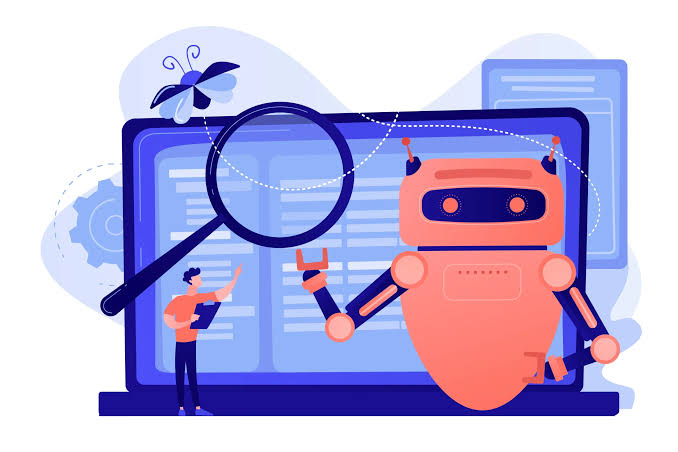Explore the role of AI-powered content moderation in ensuring online safety. This guide covers how AI enhances efficiency, consistency, and real-time response in managing online content, as well as the challenges and limitations, including accuracy, contextual understanding, and privacy concerns.
AI-Driven Content Oversight; Safeguarding Online Spaces
In the era the need for oversight has become crucial in ensuring security and promoting positive online environments. The rapid expansion of user content on media platforms, discussion boards and various web spaces poses hurdles for human monitors. Artificial Intelligence (AI) has surfaced as a solution to tackle these obstacles by improving the speed and efficacy of content moderation. This in depth analysis delves into the functionality of AI driven content moderation its advantages, drawbacks and its influence, on safety.
Understanding AI-Powered Content Moderation
Content moderation that uses AI technology involves the use of intelligence to examine, filter and oversee content. AI systems, especially those employing learning and natural language processing capabilities analyze data to detect and handle harmful or unsuitable material. This technology can manage content on a scale offering a solution to the constraints of moderation.
The essence of AI moderation lies in teaching algorithms to identify patterns and irregularities in content. Machine learning algorithms are trained using datasets of tagged content to understand the difference between content. These trained models can then be implemented on incoming content to provide feedback and take action promptly.
Benefits of AI-Powered Content Moderation
1. **Scalability and Efficiency** AI technology offers the advantage of handling content quickly and efficiently. While human moderators can review amounts of content at once AI systems can analyze thousands of posts per second. This scalability is crucial, for platforms with users and a constant flow of content.
2. **Consistency and Objectivity** AI systems ensure moderation by applying the same rules consistently across all content. Unlike human moderators who may have biases or subjective judgments AI algorithms follow predefined criteria reducing the chances of decision making.
3. **Real Time Moderation** AI powered tools can operate providing feedback and taking action. This capability is essential for addressing content such as hate speech or violent material before it spreads and causes harm. Real time moderation contributes to a safer online environment by swiftly dealing with content.
4. **Cost Effectiveness**: Utilizing AI for content moderation streamlines the process and reduces dependence on large human moderation teams, which can be expensive. By employing AI technology platforms can handle moderation tasks more efficiently while still upholding a level of supervision and authority.
5. **Assistance for Human Moderators**: AI doesn't replace human moderators; it complements them by managing tasks. This enables human moderators to concentrate on cases that require understanding and context. AI can identify potential issues for human moderators to examine and make final judgments.
Challenges and Limitations of AI Content Moderation
1. **Precision and False Alarms**: In spite of progress in AI technology no system is flawless. AI algorithms may occasionally misunderstand content resulting in false alerts or oversights. For instance a meme or satirical piece might be flagged as inappropriate due to language or imagery. Achieving accuracy while minimizing false alarms and oversights poses a challenge.
2. **Understanding Context** AI systems often struggle to grasp the nuances and subtleties in content. Things like sarcasm, cultural references and context specific meanings can pose challenges for AI. This limitation may lead to the misclassification of content that isn't actually harmful or inappropriate.
3. **Fairness and Bias** AI algorithms can reflect the biases present in their data or in how the system is designed. This can result in moderation outcomes that unfairly target or misrepresent certain groups or topics. Tackling bias in AI systems is an ongoing challenge that requires careful design and continuous improvement.
4. **Concerns About Privacy** Using AI for content moderation involves examining user generated data, which raises privacy issues. It's crucial to ensure that user information is handled responsibly and in accordance with privacy regulations to maintain trust and safeguard user data.
5. **Flexibility in Dealing with Threats** With the changing nature of threats and harmful material AI systems need to be regularly updated and adjusted to tackle obstacles. This involves continuous training and fine tuning of algorithms to stay in line with the tactics and strategies employed by bad actors.
The Impact on Online Safety
The use of AI, in moderating content is essential for improving safety online by tackling content stopping the spread of misinformation and promoting positive interactions. Through the automation of detecting content AI technology contributes to creating online spaces and safeguarding user well being.
Nevertheless the success of AI in ensuring safety relies on a blend of technological solutions and human supervision. AI systems should work alongside moderators who can offer insight and handle situations that AI might find challenging.
Additionally transparency and accountability in AI content moderation are crucial for upholding user confidence. Platforms need to clearly outline their moderation guidelines explain the role of AI in content assessment and detail how they address mistakes or disputes.
Conclusion
The use of content moderation powered by AI marks a step forward in ensuring online safety. By utilizing the capabilities of AI platforms can effectively tackle the task of overseeing user generated content. While AI brings advantages like moderation and cost savings it's important to acknowledge its limitations, in terms of accuracy, context comprehension and potential biases. A combination of AI and human supervision along with transparency in moderation processes is crucial for establishing a secure and reliable online space. As technology progresses AI driven content moderation will continue to play a role in strategies for online safety adapting to emerging challenges and fostering digital communities.
